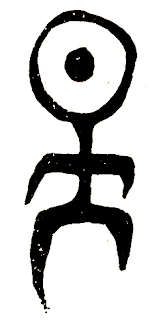Opinion - Industrial Music
Marc Nash discards his mullet and spandex and gets right to the heart of a different type of music as he turns his attention to Industrial...
Ladies and gentlemen, in the red corner, hailing from New Cross, London, the undisputed 1980s face of freedom, Test Department. And in the black corner, hailing from Berlin, the Perpetuum Mobile that is Einsturzende Neubauten.
I want to celebrate industrial music. Throbbing, pulsing, collages of noise. Anti-music. Instead of preening musicians with outsized bouffant hairdos, this was boiler suits, sweaty-stained vests and short hair to keep clear of the machinery. Possibly even some safety goggles. This was music to set your skeleton a humming. My definition of a good night out, before the likely onset of arthritis.
The above two bands were two of my faves and certainly the two I got to see perform live the most. TD played no instruments at all, beating on industrial sheet metal and oil drums. Neubauten scrapped their drumkit for found metal, but retained their guitars and bass. Yet within such a seeming similarity of stage presentation, I want to compare and contrast them.
Test Department were all about the emotional associations with industrial imagery. They were a band about the dignity of physical labour, the sweat of the brow, man contending with metal machine. The iconography of a live performance was a man wielding a sledgehammer, dwarfed by the size of his task and the projection of his shadow. The imagery was very Russian Futurist and the band openly touted their socialist leanings in the visuals employed.
Of course in 21st century, few jobs remain where a man beats sheet metal with a hammer. In the above video, such actions now look contrived, contextless. There is little dignity in hard, hot, work. None where it is counterfeited for artistic motives. Such jobs haven't been saved by reifying them, trying to elevate their status into something they are not. I saw TD play a railway repair factory the day before it was due to be demolished. It was fantastic, a real event. But the factory was still razed and there's probably a supermarket or flats on the site now.
By pinning their standard so closely to modern industry, TD became a touch outmoded along with it. Their best album remains the one recorded with a Welsh Miner's choir out on strike in 1984, but the really resonant songs have the choir upfront and the band very much in the background. The band also played a gig in the bowels of Cannon Street station (prefiguring the Stop The City events), but they could never play down a colliery, beating on a coal seam.
Their commitment to an industrial pulse made the music intensely disciplined. It throbbed, it pounded, but it never threatened to sunder its own limits, to burst its banks, so for all the build up of power and rhythm, the audience knew they would be released from its bondage at the end. Not so with Neubauten.
The Berliners, residing in a schizophrenic city walled against itself, celebrated apocalyptic decline rather than trying to prop up against it. They played autobahn girders and even singer Blixa's mic'd up ribcage. They wanted to dance away the decadence, superannuation and ruination, forging a poetics from it. They didn't seek to dignify anything, just to preserve some dying screams of a civilisation on its knees. The song with Blixa's ribcage was called "Thirsty Animal" and indeed it was. A rabid dog of a song.
But live they unleashed the energy that was always formally bound and trussed with TD. They were not in awe of their instruments, after all they were only found pieces of metal, not supposed to suggest anything iconographically. It's hard to fetishise an air compressor or a shopping trolley both of which they used to play live. They were completely untrustworthy on stage. They were kicked off the European U2 Zoo tour, for um disrespecting the audience - could you imagine a U2 audience 'getting' Neubauten? Mind you a Neubauten audience were no more respectful, one London gig I attended had a couple in front of me pressed against the apron of the stage having sex throughout Neubauten’s set - no one batted an eye. At the ICA in 1984 "Concerto For Voice And Machinery" and egged on by the crowd, the band drilled through the stage floor attempting to access supposed secret tunnels to Buck House (article on it can be found here). In NYC the onstage fires caused the venue to panic and pull the plug. You always got danger with Neubauten as well as the rhythms. The shower of sparks their metal grinders sent out always seemed more threatening than those of TD.
Interestingly both bands moved in to larger theatrical performances and into investigations within their own cultural primitive roots. TD worked with Brith Gof performance company, Neubauten scoring Heiner Muller's "Hamletmachine, Werner Schwab's "Faustmusik" and German folksongs with tracks such as "Ein Stuhl in der Holle". For the anniversary of the start of the First World War, they released an album for a performance piece in Belgium called “Lament”. What could be more mechanised than that particular occasion of industrial butchery and Neubauten’s take on it with their metal orchestra (a harp made from barbed wire for example) perfectly captures the inhuman sound. So what started as industrial and apocalyptical, regressed into classical art forms of theatre, opera and traditional folk rhymes.
But we still have the rhythms. And I for one still celebrate that.
Image - YouTube.
Marc is on Twitter as @21stCscribe
His books are available on Amazon






Post a Comment